Minds On
Let’s get started
Simple machines in our daily lives
People use different simple machines in their daily lives. Simple machines help people in different ways.
There are six different simple machines, and they are all around.
Press the following tabs to learn all about the six different simple machines.
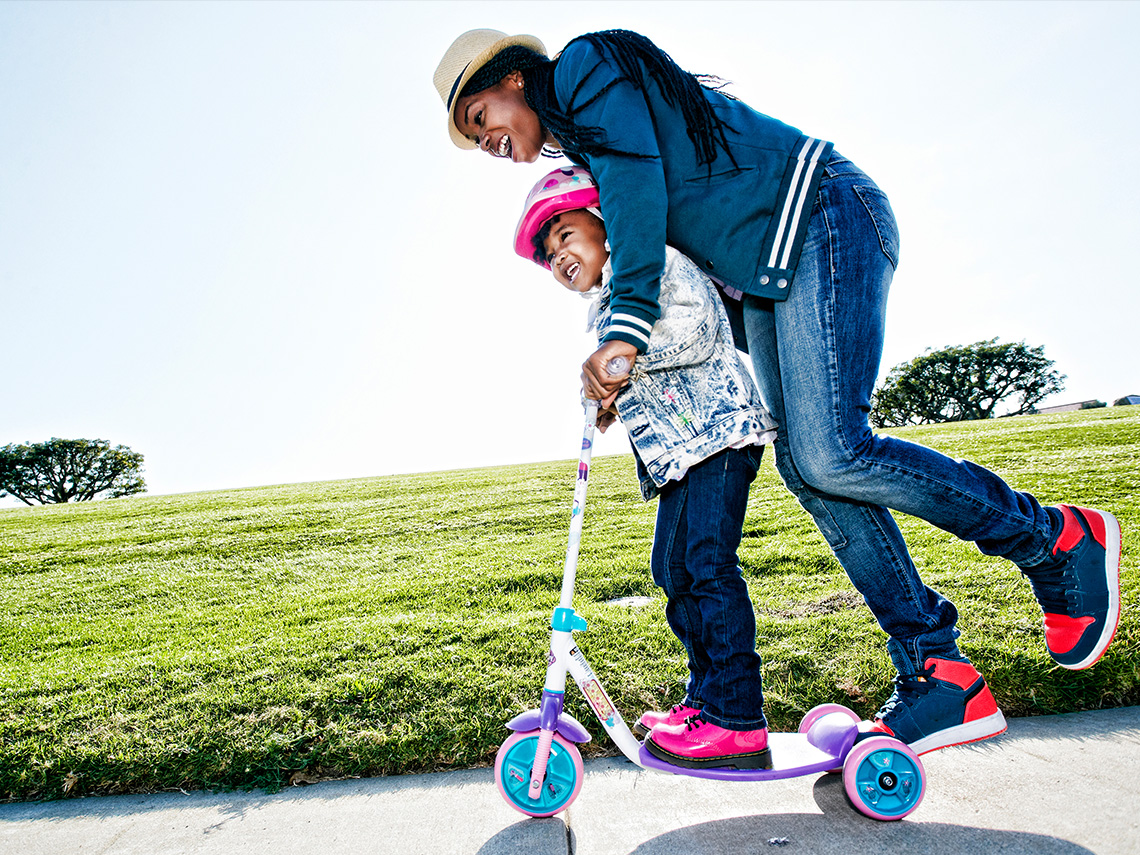
This scooter is a simple machine. It has wheels and axles. A wheel is what makes the scooter go round and round. An axle is a small rod or stick that goes through the wheel and helps move the wheel around. It can be long or short.
Explore the following animation. Do you notice the wheel? Do you notice the axle?
They are working together!
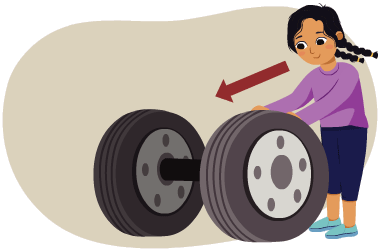 Description
Description
A learner is pushing one of two wheels attached to the ends of an axle. The wheels move forward and back. An arrow shows she is pushing forward.
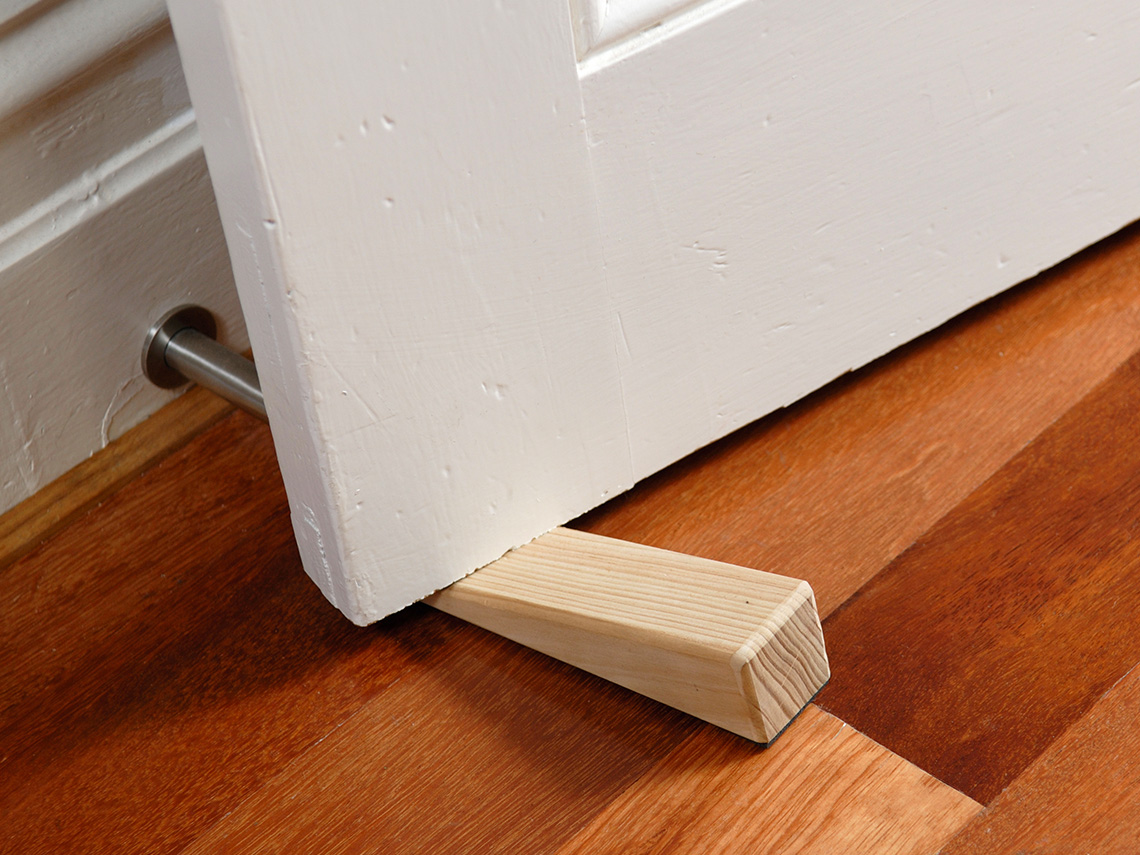
The doorstop is a simple machine. It is a wedge! A wedge has at least one side that is slanted. A wedge can hold something in its place or pull something apart.
Explore the animation. Do you notice a slanted side? Is the wedge pulling something apart or holding something in its place?
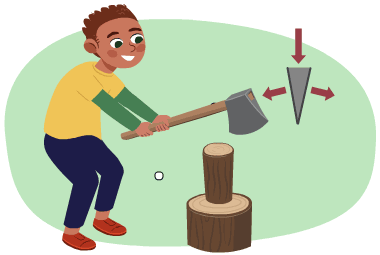 Description
Description
A person is using an axe to cut a log into two pieces. An arrow shows the downward direction of the axe. Two arrows, one to the right and one to the left, show the direction the chopped pieces of wood fall.
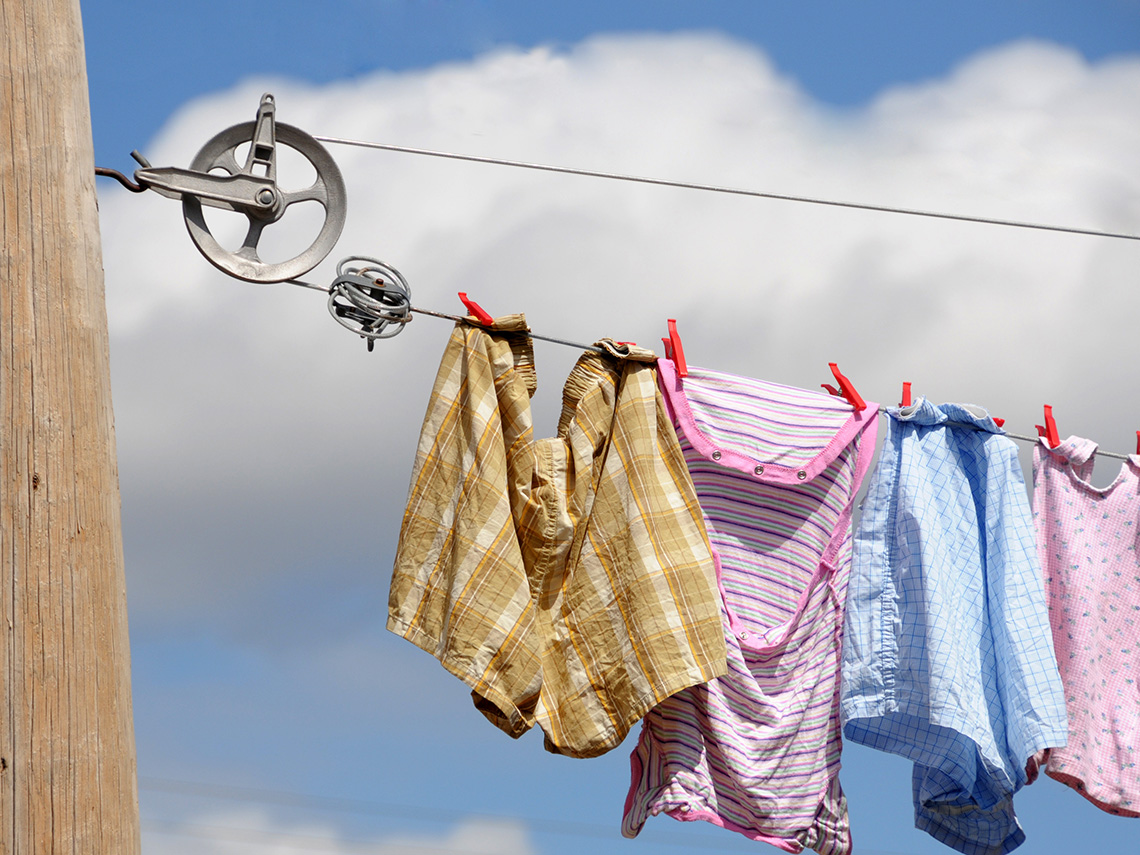
A clothesline is a simple machine. It is a pulley! A pulley uses a wheel and a rope to move and object. It can also pull an object up or pull it down.
Explore the animation. Do you notice the rope? Do you notice the wheel?
They are working together!
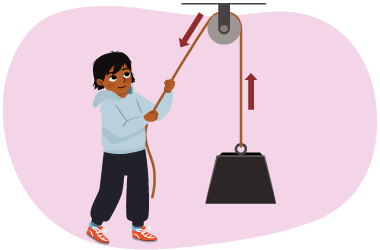
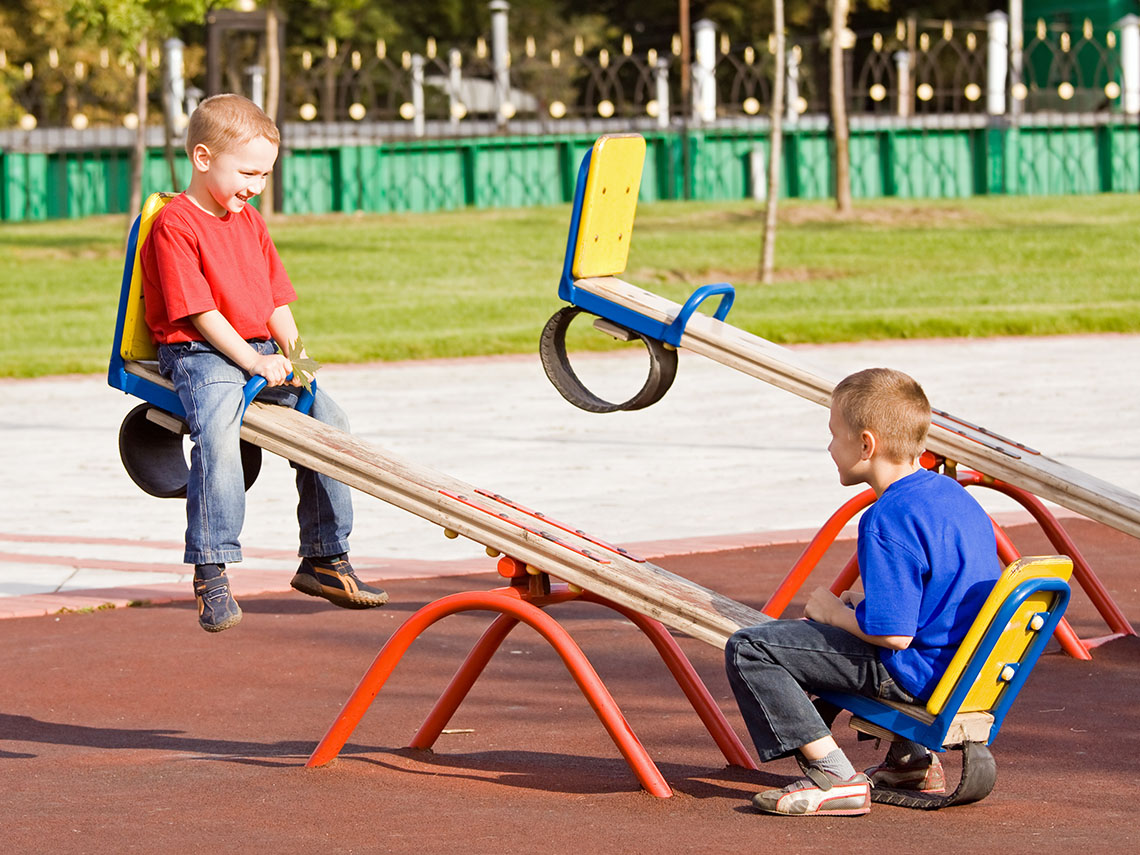
A teeter totter is a simple machine. It is a lever! A lever is a bar that has a piece in the middle of it. It’s called a fulcrum. It makes the bar move up and down.
Explore the animation. Do you notice the bar? Do you notice the fulcrum?
They are working together!
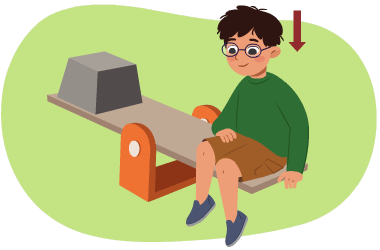
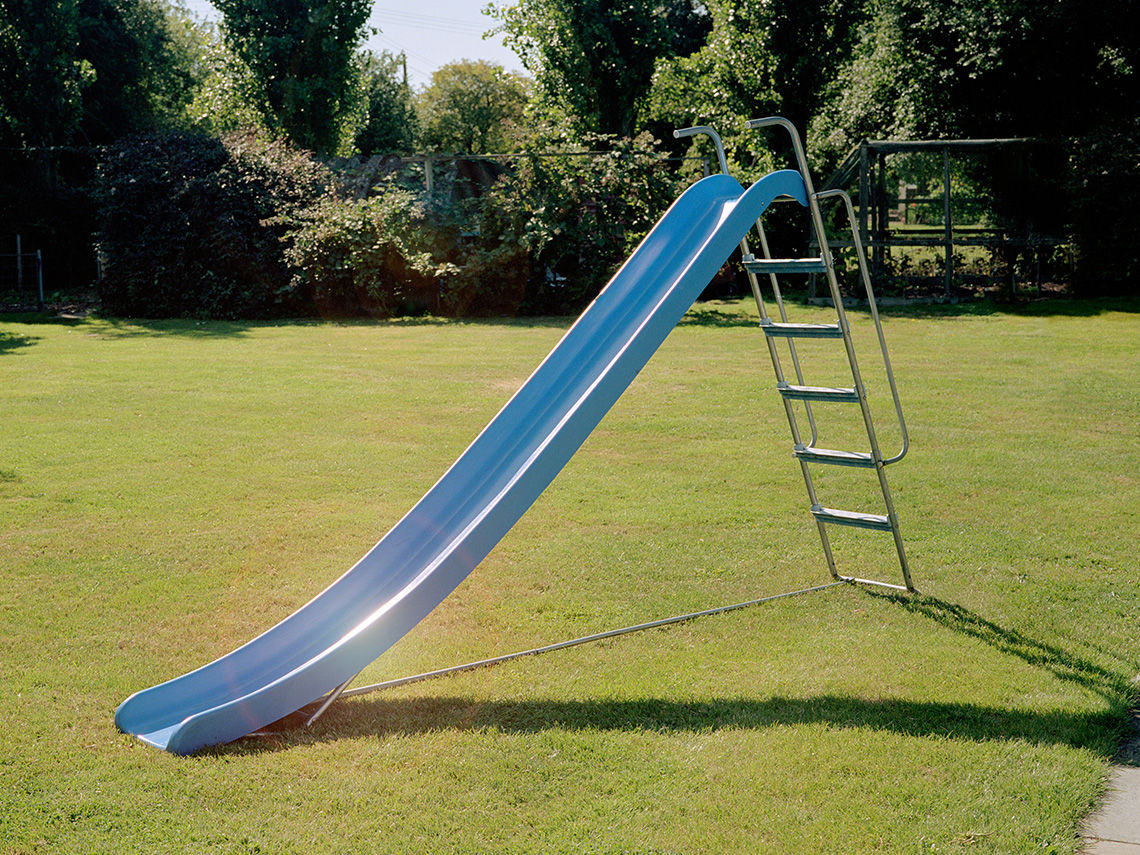
A slide is a simple machine. It is called an inclined plane! An inclined plane is a thing that is slanted which means it is not flat. There is a lower point and a higher point. This makes it easier to move something. A slide that is flat just wouldn’t work!
Explore the animation. Do you notice the inclined plane? Does it have a lower point? And a higher point?
This makes it easier to move something.
 Description
Description
A learner is pulling a weight wrapped with a rope up an inclined plane towards herself. An arrow pointing up shows the direction of movement.

The water bottle cap is a simple machine. It is a screw! A screw holds things together. It has ridges around it called threads. The water bottle also has ridges around it and when you put the cap on, they match up. You can make a screw tighter by turning it one way and looser by turning it the other way.
Explore the animation. Do you notice the screw? How is it being turned?
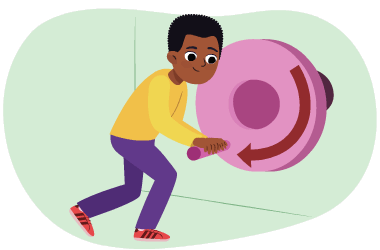
Let’s try some matching! In the following Matching activity, choose the name that best fits the image of a simple machine!
People use simple machines every day.
Some simple machines add enjoyment to our lives.

For example, the wheel and axle is used on devices such as skateboards.

The lever on a device such as a teeter-totter is another simple machine that is very fun!

For example, using a ramp allows people to move from one level to another.
All simple machines make work easier.
Can you think of other simple machines used in daily life?
What is the purpose of the simple machine?
Record your ideas digitally, orally, or on paper.
Action
Simple machines then and now
Throughout history, people have developed simple machines to make work easier.
In Science, the word “work” does not mean homework.
Work is a force that moves an object such as a push or a pull.

Push: a force that moves something away from you.
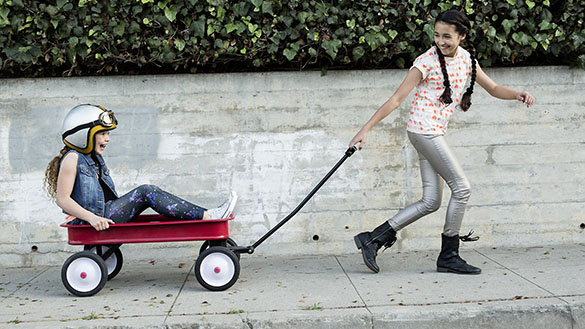
Pull: a force that brings something toward you.
Over time people also found new ways to use simple machines by combining them.
Explore the following examples of simple machines at work.
Pulleys
Examine the following images.
What do you notice?
How are the water well and crane similar? How are they different?

Crane

Water well
Press the following tabs to learn more about cranes and water wells.
A crane is a very tall machine used to lift and lower heavy materials. It is often found on a construction site.
A crane is also an example of a machine that uses a pulley. It has an engine, which allows it to lift and carry heavier loads than the pulley system for a water well.
A water well is a hole that is dug into the Earth to get water. It uses a simple machine called a pulley.
Pulleys make it much easier for people to lift and move a load. In this case, the pulley is used to lift and lower the bucket in the well.
Inclined planes
Examine the following images.
What do you notice?
How are the stairs and the escalator similar? How are they different?

Staircase

Escalator
Press the following tabs to explore how staircases and escalators are a kind of simple machine.
A set of stairs connect one level of a structure or building to another. They are an example of an inclined plane.
Inclined planes reduce the effort needed to move from a lower level to a higher level.
For example, it would probably require more effort to climb up a wall to a higher level than to climb up a set of stairs to a higher level.
An escalator is a moving staircase that moves people between floors of a building or structure.
Like the staircase, it is also an example of an inclined plane, but it is powered by a motor.
People can choose to stand on a step or walk up the escalator.
How do machines affect the environment?
The crane is an example of an innovation that uses a pulley.
The escalator is also an example of innovation. It uses an inclined plane.

Teacher A and Teacher B in a discussion. Teacher A asks, ‘What is innovation?’ Teacher B responds, ‘Innovation means coming up with new ideas, devices, or ways of doing things. It is important because it helps people solve real-world problems!’
However, it is also important for people who design and build new things to think about how they affect people and the environment.

Crane
A crane plays a big role in construction jobs. But it can affect the environment both on and off the construction site.
Examine the following images and descriptions to learn more.
Escalators
Escalators can impact the environment because of the amount of energy they use.
For example, many escalators run continuously, such as those found in subway stations and airports.
Examine the following images and descriptions to learn more.
Pause and Reflect
What can we do about escalators?
Can innovations like escalators be more environmentally friendly?
Press ‘Answer’ to find out more!
They can! All innovations can be more environmentally friendly.
For example, some escalators have a “sleep mode” which allows the escalator to slow down and/or stop when it’s not in use.
This helps to save electricity, which also helps to protect the environment.
In the following Matching activity, choose the device that best fits the innovation!
Pause and Reflect
How do simple machines work?
You have practiced matching simple machines to their innovation.
Next, select a device from the matching activity.
Respond to the following questions:
- How does the device work?
- How do you think it might make work easier?
- How might it impact the environment?
Record your ideas digitally, orally, or on paper. If possible, share your ideas with a partner.
Press ‘Hints’ to check out some guiding questions.
Like a crane, does the device need fuel like gas or diesel to work?
Like an escalator, does the device need electricity to work?
Do you think that using the device could disturb animals, including humans, and the places they live?
Consolidation
Putting it all together
Examine the following images of two machines that use a wheel and axle.
Then, respond to the questions that follow.

Bicycle

Car
Respond to the following questions:
- What is the purpose of each machine?
- How are they different?
- Explain how each machine might impact the environment.
Record your ideas digitally, orally, or on paper.
Reflection
How do you feel about what you have learned in this activity? Which of the next four sentences best matches how you are feeling about your learning? Press the button that is beside this sentence.
I feel…
Now, record your ideas about your feelings using a voice recorder, speech-to-text, or writing tool.




